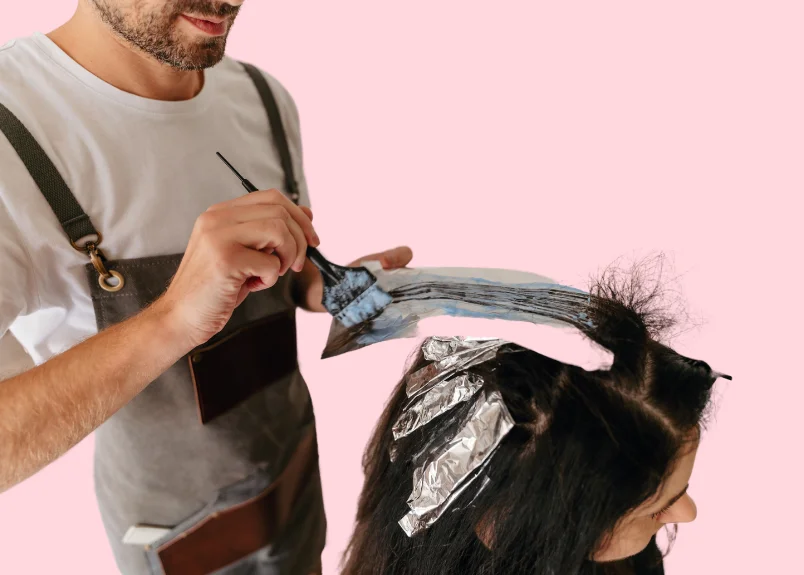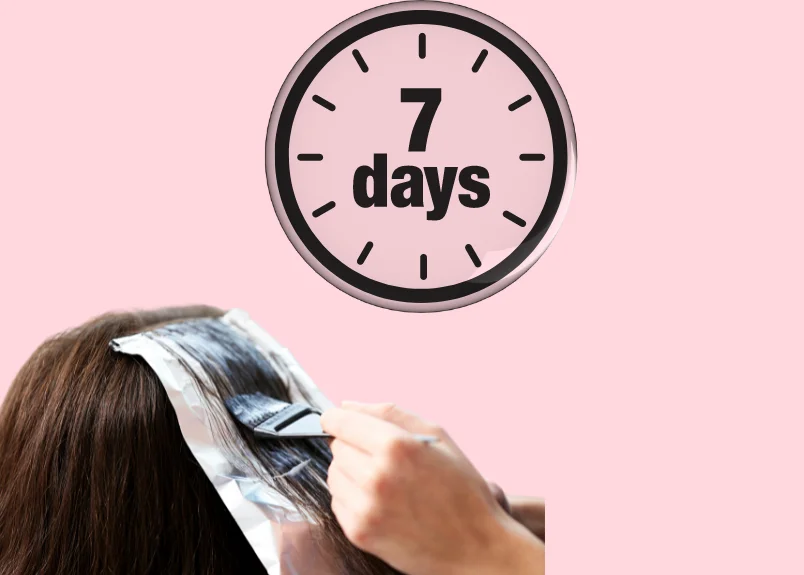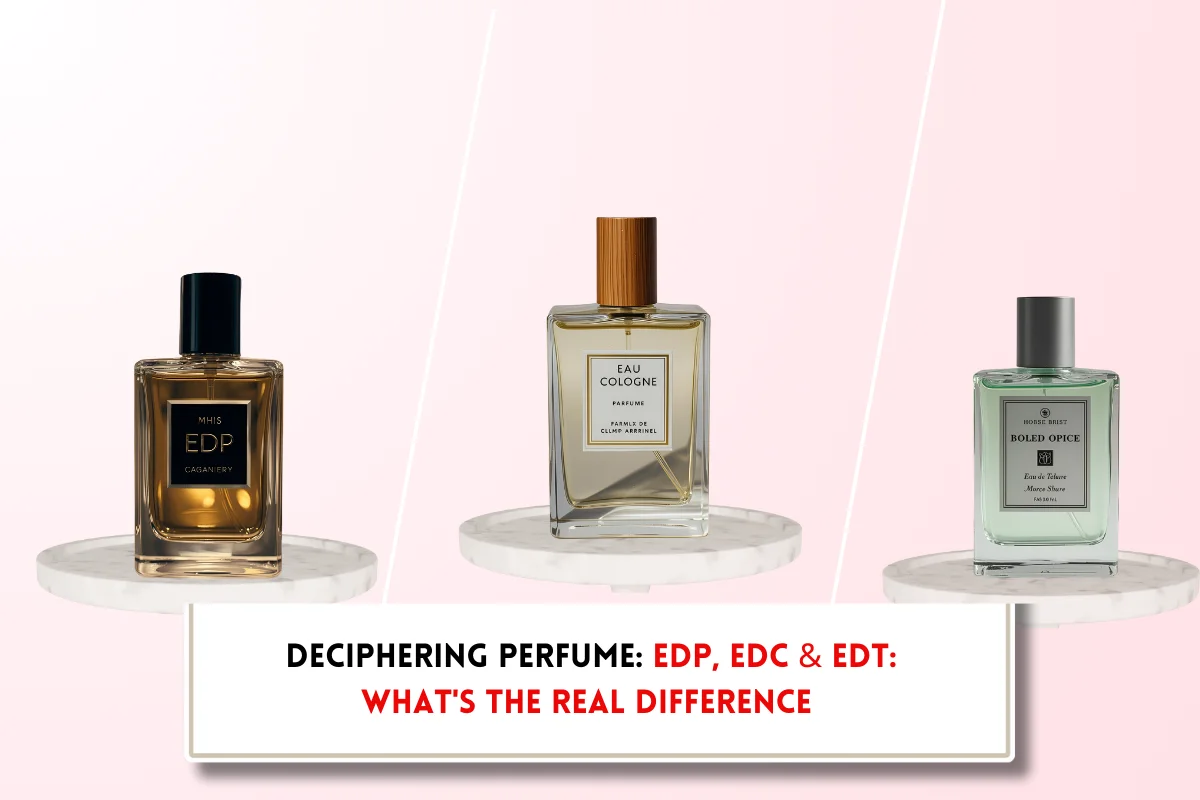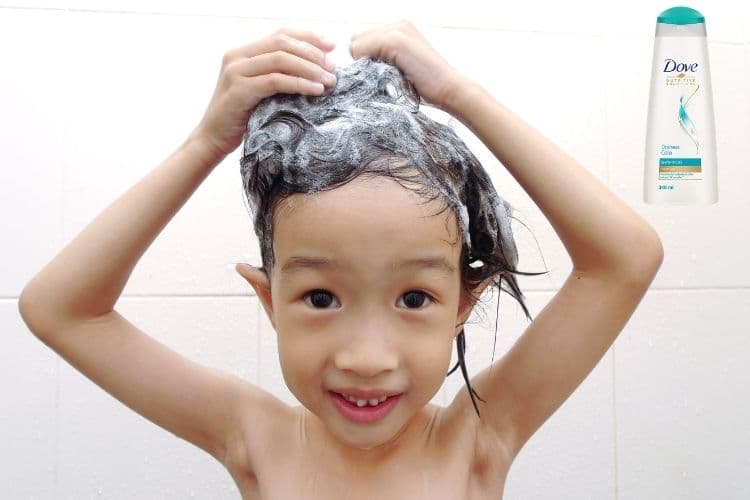Can I bleach my hair after using Color Oops?
At BeautyCaters, our expert team independently curates every recommended product. Purchases through our links may earn us a commission. Explore our transparent selection process.
So, there you are- used Color Oops to get rid of that unwanted hair color, and now, you’re probably wondering if you can bleach it to achieve a new look? Girl, you’re not alone!
Many people walk on the path of Color Oops and bleaching to reverse their hair color and get the perfect desired blonde. But the question remains: Can I bleach my hair after using Color Oops? Before you take the plunge, know how Color Oops impacts your hair and whether bleaching right after is a safe choice.
Get into the details.
- What is Color Oops?
- How does Color Oops work?
- What are the advantages of Color Oops hair color remover?
- What are the potential drawbacks of Color Oops hair color remover?
- How does bleach work?
- What are the advantages of hair bleach?
- What are the potential drawbacks of hair bleach?
- Can I bleach my hair after using Color Oops?
- What precaution should you take when using Color Oops and bleach?
- When is the best time to bleach your hair after using color remover?
- DIY guide: How to use color remover and bleach?
- 5 tips to nurture your locks after color removal and bleaching
- Final Word: Can I bleach my hair after using Color Oops?

What is Color Oops?
Color Oops is a popular brand of hair color removers that removes unwanted permanent and semi-permanent hair color. Unlike traditional bleaches, Color Oops is both bleach-free and ammonia-free, making it a gentler option for hair. It works by breaking down hair dye molecules, allowing them to be easily rinsed away.
Whether you’ve made a hair color mistake or simply want to try a new shade, Color Oops offers a convenient and effective solution. You can even re-color your hair the same day, giving you the freedom to experiment with different looks without the long wait.
How does Color Oops work?
Color Oops utilizes a unique process that shrinks the color molecules, allowing them to be easily rinsed away.
Here’s how it works:
- Penetration: Upon application, Color Oops penetrates the hair strands, reaching the embedded artificial color molecules.
- Molecular dissolution: The product’s active ingredients target and break down the molecular bonds of the artificial color, effectively dissolving them.
- Rinsing: Once the molecules are sufficiently small, they can be effortlessly rinsed away, revealing your hair’s natural color or providing a clean canvas for a new shade.
This gentle approach minimizes damage to the hair, often resulting in softer, more manageable tresses compared to traditional bleaching methods. Color Oops offers a safe and effective way to remove unwanted hair color without compromising its health and integrity.
What are the advantages of Color Oops hair color remover?

Color Oops hair color removers offer a distinct advantage over traditional bleaching methods. Here are the three advantages:
- Selective targeting: They precisely target artificial color molecules, leaving your natural hair color untouched. This ensures a more controlled and predictable outcome, preventing unintended color changes or damage to your natural hair.
- Non-invasive removal: Unlike bleach, which can strip away both natural and artificial color, color removers gently lift out the unwanted dye without compromising your hair’s natural pigment. This gentler approach minimizes hair damage, promoting healthier, stronger locks.
- Efficient application: The straightforward three-step application process makes color removers a convenient and effective choice for individuals seeking to rectify hair color errors. The ease of use allows for at-home application without the need for professional assistance, saving both time and money.
Beside, color removers often offer a more versatile range of applications. They can be used to remove unwanted color completely, transition to a new shade, or even re-color your hair the same day. This flexibility makes color removers a valuable tool for achieving a variety of hair color goals.
What are the potential drawbacks of Color Oops hair color remover?
While Color Oops offer numerous advantages, it’s essential to consider their potential drawbacks. Below are its 3 disadvantages:
- Incomplete color removal: In some cases, residual color molecules may remain in the hair, resulting in a less-than-ideal outcome. This can occur when the color remover doesn’t fully penetrate the hair shaft or if the original color was particularly stubborn.
- Potential hair damage: Although generally gentler than bleach, repeated use of color removers can still lead to dryness and brittleness, especially if proper hair care measures are not followed. It’s crucial to nourish your hair with hydrating treatments and avoid excessive heat styling to minimize damage.
- Unpredictable color outcomes: The results of color removal can vary depending on factors such as the original hair color, the application technique, and the specific product used. In some instances, uneven lightening or unexpected color shifts, such as turning orange, may occur.
Also Read: What is base breaking in hair color?
How does bleach work?
Bleach operates on a fundamentally different mechanism compared to color removers. It lifts your natural hair color, creating a lighter shade. This process involves the destruction of the hair’s natural pigment.
- Hair shaft penetration: Bleach is applied to the hair, penetrating the hair shaft.
- Pigment destruction: Once inside the hair shaft, bleach targets and breaks down the natural pigment molecules, resulting in a lighter color. Whether bleach is right for you or not largely depends on your hair’s condition, your desired result, and how willing you are to manage potential risks while bleaching.
What are the advantages of hair bleach?

Bleach offers a range of advantages for those seeking dramatic hair color transformations:
- Radical color shifts: Bleach empowers you to achieve significant color changes, allowing you to go several shades lighter than your natural hair color. This versatility opens up a world of possibilities for expressing your personal style.
- Tone correction: Bleach is an effective tool for neutralizing unwanted warm tones in your hair. Whether your natural color has a brassy undertone or previous color treatments have left it looking dull, bleach can help restore a cooler, more balanced hue.
- Creative color exploration: For those who desire to experiment with vibrant, unconventional colors, bleach provides a blank canvas. By lifting your natural color, bleach creates a foundation that allows these bold hues to truly shine. This opens up a realm of creative expression, limited only by your imagination.
What are the potential drawbacks of hair bleach?
While bleach offers transformative results, it’s essential to be aware of its potential drawbacks:
- Hair damage: The aggressive nature of bleach can lead to damage, including dryness, breakage, and weakened hair structure. Overprocessing can exacerbate these issues, making it crucial to use bleach sparingly and follow proper application techniques.
- Increased maintenance: Bleached hair requires more attention than untreated hair. Investing in nourishing hair products and regular deep conditioning treatments is essential to maintain its health and prevent further damage.
- Growth contrast: As your natural hair grows out, the contrast between your bleached ends and your roots can become noticeable. This may require frequent touch-ups to maintain a consistent appearance.
Remember, the suitability of bleach for your hair depends on several factors, including:
- Hair condition: Bleach can be particularly damaging to hair that is already weak, dry, or damaged. If your hair is in poor condition, it’s advisable to consult with a professional hairstylist to assess its suitability for bleaching.
- Desired outcome: Consider the desired level of lightening. More significant color lifts often require multiple rounds of bleaching, which can increase the risk of damage.
- Risk tolerance: Bleaching can lead to dryness, brittleness, and even breakage. It’s important to be aware of these potential risks and be prepared to manage them with proper hair care.
Can I bleach my hair after using Color Oops?
Yes. While it might seem counterintuitive to combine Color Oops and bleach, this strategic approach can offer significant benefits for achieving your desired hair color:
- Effective color removal and preparation:
- Previous color removal: Color Oops efficiently eliminates residual hair dye, creating a clean canvas for subsequent bleaching.
- Even bleaching: Through removal of previous color, Color Oops helps ensure that bleach penetrates the hair shaft more evenly, reducing the risk of dryness, breakage, and uneven results.
- Tone correction and balancing:
- Brassiness elimination: Color Oops can sometimes leave a reddish or orange tint. Bleach effectively lightens the hair, counteracting these unwanted tones and creating a more balanced color.
- Time and cost efficiency:
- Streamlined process: Combination of Color Oops and bleach in a single session eliminates the need for multiple dyeing steps, saving time and money.
- DIY-friendly: This approach is relatively straightforward, making it suitable for those who prefer to perform hair color treatments at home without extensive professional expertise.
- Damage mitigation:
- Reduced chemical exposure: Color Oops prepares the hair by shrinking hair dye molecules, allowing bleach to penetrate more quickly and reduce processing time. This minimizes exposure to harsh chemicals, potentially limiting damage.
- Enhanced color uniformity:
- Even pigment distribution: Color Oops removes unwanted pigments, ensuring a more even base for subsequent bleaching. This leads to a more uniform and vibrant color result.
What precaution should you take when using Color Oops and bleach?
While using strong products like Color Oops and bleach can pose risks to your hair, there are effective strategies to mitigate damage:
- Prioritize color removal: Applying Color Oops first can significantly reduce the workload for bleach, minimizing potential damage. By removing previous color, you create a cleaner canvas for bleaching, allowing for a gentler and more effective process.
- Nourish and strengthen: Ensure your hair is adequately nourished and strengthened before and after the color removal and bleaching processes. Use conditioning treatments or masks to provide essential moisture and protect your hair from damage.
- Conduct a strand test: Always perform a strand test on a small section of your hair before applying Color Oops or bleach to your entire head. This test will help you assess your hair’s reaction to the products, identify any potential sensitivities, and determine the appropriate processing time.
When is the best time to bleach your hair after using color remover?

It is advisable to wait at least one week and three washes after using a hair color remover before bleaching your hair. This allows sufficient time for your hair to recover from the color removal process and minimizes the risk of damage during subsequent bleaching.
Some experts suggest waiting even longer, particularly when using products like ColorB4. A waiting period of one week or more can be beneficial for highlighting your hair after using ColorB4. This gives your hair ample time to adjust and prepare for the bleaching process.
DIY guide: How to use color remover and bleach?
This step-by-step guide will help you achieve your desired look using Color Oops and bleach.
- Prepare: Put on gloves and wear an old shirt to protect your clothes.
- Remove color: Follow the color remover instructions, applying it to your hair for the recommended time (usually 20 minutes).
- Rinse thoroughly: Rinse your hair completely to remove all color molecules.
- Gentle drying: Pat your hair dry gently with a towel. Avoid rough drying. Wait for a week.
- Mix bleach: Follow the bleach instructions, mixing powder and developer in a bowl.
- Apply bleach: Apply bleach to your hair, starting from the ends and working your way up. Avoid applying to your roots first.
- Monitor and rinse: Wait for the recommended time (15-30 minutes), checking your hair regularly. Rinse out all the bleach thoroughly.
- Condition: Use a good conditioner to moisturize your hair after bleaching.
Remember: Always follow product instructions, test the products on a small section of hair first, and be patient.
5 tips to nurture your locks after color removal and bleaching
Bleaching and color removers can be harsh on your hair, so it’s essential to provide extra care and attention to restore its health and vitality.
- Deep conditioning: Deep condition your hair to replenish moisture and repair damage caused by the chemical processes. Use a high-quality deep conditioner formulated for bleached hair.
- Gentle cleansing: Use a sulfate-free shampoo and conditioner specifically designed for bleached hair. Saulfates can strip your hair of natural oils and contribute to dryness, so avoiding them is crucial.
- Minimize heat styling: Reduce your reliance on styling tools that use heat, such as flat irons and curling irons. Excessive heat can further damage bleached hair. When you do use heat styling tools, always apply a heat protectant spray to create a barrier between your hair and the heat.
- Allow for recovery time: Give your hair a break between the color removal and bleaching steps. A couple of hours are generally sufficient, but if your hair is particularly damaged or dry, waiting a day or two may be beneficial.
- Strand test: Before proceeding with the full treatment, conduct a strand test on a small section of hair to assess your hair’s reaction to the products and determine the appropriate processing time. This helps minimize damage and set realistic expectations.
Final Word: Can I bleach my hair after using Color Oops?
While it’s technically possible, it’s generally not recommended. Color Oops is a harsh chemical that can already weaken your hair. Adding bleach to the mix could further damage your hair and leave it brittle and prone to breakage. If you’re looking to lighten your hair, it’s best to wait a few weeks after using Color Oops and consult with a professional colorist for a safer and more effective approach.










